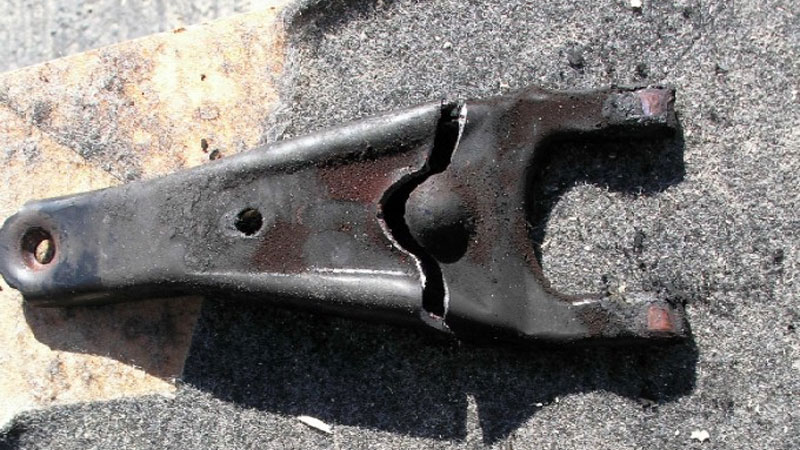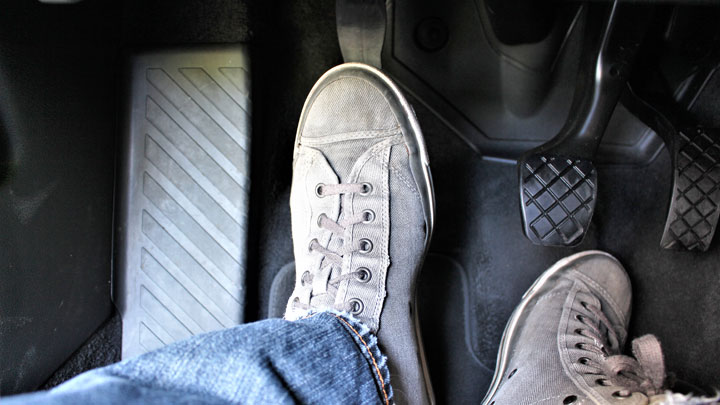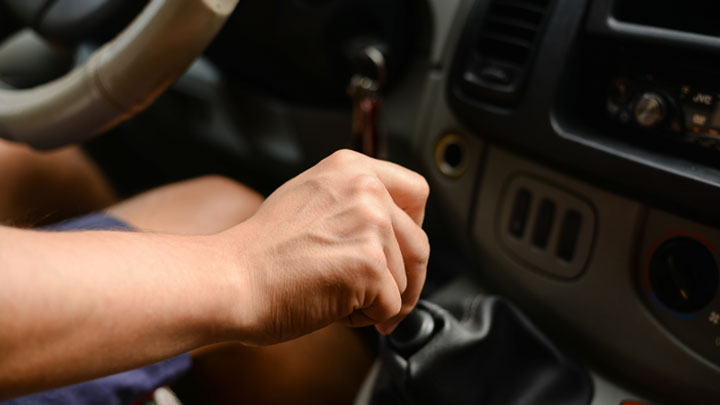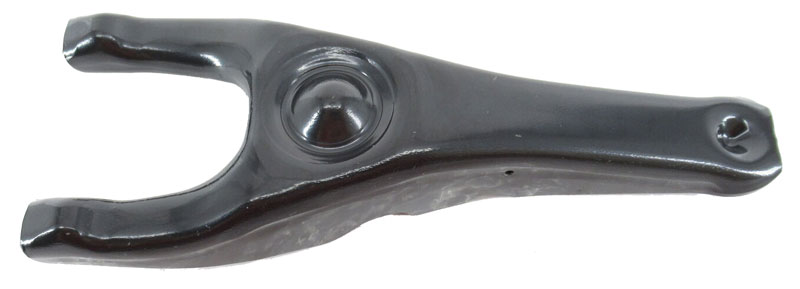6 Symptoms of a Bad Clutch Fork (and Replacement Cost)
If you drive a vehicle with a manual transmission, it has a clutch. You know all about depressing the clutch to shift gears, but when everything isn’t shifting the way it should, what does it mean?
Well, one potential reason for a hiccup is the clutch fork. But what does a clutch fork do, what are some symptoms that it might be time to replace it, and how much is that going to cost?

What Is a Clutch Fork?
Depressing the clutch disengages the transmission so you can shift gears. It’s an important part of driving a manual vehicle, but the clutch pedal doesn’t work all by itself! The clutch pedal connects to a master cylinder that pushes hydraulic fluid to a slave cylinder.
As the slave cylinder moves, it uses an operating linkage to physically move the clutch fork forward. The clutch fork pushes against a spring, and this assembly pushes up against a pressure plate to disengage the clutch.
When you let go of the clutch, the spring pushes the clutch fork back, and the transmission reengages. The clutch fork is a pretty simple metal component, but without it you wouldn’t be able to get your vehicle out of gear when you want to shift.
Bad Clutch Fork Symptoms

If your vehicle has a faulty clutch fork, there are a few potential symptoms. But keep in mind that while these symptoms could indicate a defective clutch fork, they could also indicate another problem with the transmission.
If your vehicle is displaying any of these symptoms, the best thing you can do is inspect the various components of your transmission to figure out exactly what’s going on.
#1 – Trouble Shifting Gears
Your clutch fork helps you shift gears, so it makes sense that shifting from gear to gear will be more challenging if it’s starting to fail. This can happen as the prongs on the clutch fork start to bend, making it difficult to fully depress the pressure plate.
While it’s often still possible at this stage, you’ll need to depress the clutch further than usual. As the flex worsens, you’ll need to keep pushing further and further, and eventually the entire prong might snap off.
#2 – Stiff Clutch Pedal

If you’re finding that you have to put a little extra force behind the clutch pedal to shift gears, the problem might be a clutch fork that isn’t working the way it should.
The clutch fork is there to assist you in depressing the pressure plate, so if it’s not making full contact, it might take a bit more leg work to get the job done and simply adjusting the clutch pedal is of no help.
With a faulty clutch fork, the problem will likely get worse over time until the part fails completely, then there might be no pressure behind the clutch at all.
#3 – Loud Grinding Noise
The whole reason the clutch fork depresses the pressure plate is to actively disengage the clutch from the transmission. When it’s working properly, this allows you to shift into a new gear without anything grinding or smacking into each other.
But a faulty clutch fork might not fully depress the pressure plate, which means you might have a partially engaged clutch when you try to shift gears. If this happens, you’ll hear a lot of grinding as you struggle to get the transmission into the new gear.
See Also: 9 Reasons You Hear a Grinding Noise When Braking
#4 – Excessive Vibrations
When you shift into a new gear, everything should shift smoothly into place. If excessive jerks occur every time you try to shift, your vehicle might have a faulty clutch fork.
This could happen if the clutch fork is bouncing around a bit as you hit the clutch, and it can happen if the clutch fork can’t fully depress the pressure plate anymore.
#5 – Inability to Shift Gears

Typically, this won’t happen all at once, but if the clutch fork fails completely you won’t be able to shift into a new gear. The clutch fork releases the pressure plate to let you shift gears, so if the clutch fork snaps you won’t be able to shift out of gear so you can get into a new one.
However, this is usually something that happens after you’ve ignored other symptoms for an extended period.
Related: 7 Reasons Your Car Won’t Shift Into Reverse
#6 – Clutch Pedal on the Floor
If the clutch fork fails completely you won’t be able to shift gears, and there’s a good chance when you depress the clutch pedal it won’t push back up. If the clutch is sitting on the floorboard, you have a pretty serious problem, and it might be a snapped clutch fork.
Read Also: 4 Causes of a Brake Pedal That Goes to the Floor
What Causes Clutch Fork Problems?

If your vehicle’s clutch fork breaks, that can be a sign of a bigger problem. A clutch fork can break if there’s a bad throw-out bearing, too much pressure on the pressure plate, or if your vehicle has a warped flywheel.
Of course, while all these things might be a part of the problem, it’s also possible that the clutch fork wore out and there’s no underlying problem. While it’s relatively rare since it’s a solid metal part, it is possible.
How Much Play Should a Clutch Fork Have?
If you’re inspecting a clutch fork and you notice some play between the clutch fork and the pressure plate, this is perfectly normal. In fact, a brand-new clutch fork should have about one inch of play if you install it correctly. Too little play will create problems, as will too much.
While a little extra play will happen over time, as long as you’re not having any problems shifting gears it shouldn’t be an issue. However, if the clutch fork cannot fully depress the pressure plate because of the amount of play, this is a problem.
Clutch Fork Replacement Cost
Best places to order parts? See: 19 Best Online Auto Parts Stores

If your vehicle does need a new clutch fork and you’re paying a mechanic to install it, it’s not a cheap fix. Expect to spend anywhere between $400 and $700.
However, if you’re mechanically inclined and are willing to do the work yourself, the clutch fork itself usually only costs between $25 and $50. The rest of the cost to replace the clutch fork comes down to labor.
But while it can be tempting to try and tackle this job yourself, there’s a reason the labor costs are so high. It’s a longer job, and it requires a bit of technical knowledge to complete.
Finally, while $400 to $700 might seem steep to replace a component in the clutch if you need to replace the entire clutch you can expect to spend between $1,300 and $1,500!
- P0521 Code (Symptoms, Causes, How to Fix) - Mar 22, 2024
- How to PROPERLY Clean 5 Types of Steering Wheel Materials - Feb 19, 2024
- What Should You Do If Your Check Engine Light Comes On? - Nov 6, 2023

The person who shared this article has shared a very useful information as even I also had issue in my car and service centre asked to replace clutch fork. This is helping me understand internal process of a car as an owner.